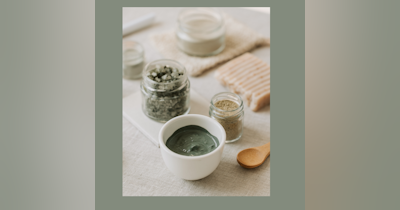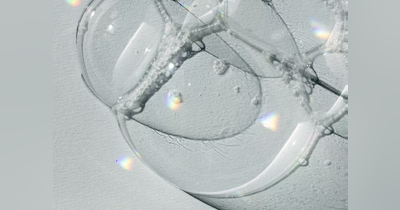Sodium lauryl sulfate (SLS) and sodium laureth sulfate (SLES) are cleansing ingredients (aka: 'surfactants' or 'detergents') that are found in a number of personal care products, including facial cleansers, body washes and shampoos. As detergents, they are responsible for removing oil and dirt from the skin and hair. They are also responsible for the lather that's created when washing or shampooing. However, SLS has the potential to cause skin and eye irritation.
While SLS may cause skin and eye irritation (or eye damage in high-enough quantities), there is no evidence either one are carcinogens (cause cancer) or mutagens (alter DNA), although some Internet articles claim SLS is a mutagen. Their non-carcinogenicity and non-mutagenicity have been confirmed by numerous government and international agencies over the years, including the United States’ National Toxicology Program (NTP), the Occupational Safety and Health Administration (OSHA), the International Agency for Research on Cancer (IARC), California Proposition 65 List of Carcinogens, Skin Deep Report by the Environmental Working Group, and the Cosmetic Ingredient Review committee of the Personal Care Products Council (PCPC). SLS and SLES are also on the Generally Recognized As Safe (GRAS) list published by the U.S. Food and Drug Administration, and are considered safe for use in cosmetics by Health Canada, the Canadian equivalent of the U.S. FDA, and - contrary to some reports on the Internet that they're banned - are allowed for use in the EU.
While SLS and SLES are not carcinogens, there is plenty of data indicating SLS is an irritant, capable of producing visible redness and scaling along with perceived tightness – all of which are symptoms of dry skin – as well as swelling of the stratum corneum and heightened transepidermal water loss, both of which are not easily apparent to the naked eye. But the possibility or amount of irritation that can occur is dependent on a variety of events, including:
- Percentage of SLS present in the product. According to the Journal of the American College of Toxicology (vol 2, no. 7, pp 127-181, 1983), SLS is an irritant at concentrations of 2.0 percent and greater. Irritation increases as the percentage climbs. However, lesser quantities are known to cause irritation in those with atopic dermatitis and other skin conditions where the skin’s barrier has been damaged – such as people with chronically dry skin or those who have just gone through an exfoliation procedure. SLS is such a reliable skin irritant, it is the most frequently used substance in experimental Irritant Contact Dermatitis studies, where skin must be easily irritated to measure results. Used at levels as low as 0.5 percent in water, SLS is usually occluded or otherwise held onto the skin in some way for exposure times of one to 72 hours – far longer than one would expect to use this ingredient under normal conditions.
- Length of exposure to the product. The longer the exposure, the greater the possible irritation. This is why SLS is recommended for use in products intended for discontinuous, brief use followed by thorough rinsing from the skin, such as with facial cleansers and body washes. Be sure to thoroughly remove these products, rather than a brief 'splash and dash'. Simply wiping the skin a couple of times with a washcloth or sponge is not enough. For the face, splash 12-15 times with lukewarm water fresh from the tap. In the shower, rinse well before stepping out to dry off. When SLS is in a bubble bath, the product should be diluted in a tub of water as directed by the product’s manufacturer, rather than applied directly to the skin. At the end of the bath, be sure to rinse well before drying off.
- Other ingredients present in the product. Adding one or more mild surfactants to a formula with SLS has been found to significantly lower skin irritation, even though the product contains a higher amount of total surfactants. Some researchers believe this is because the milder surfactants compete with the SLS for sites in the skin where irritation is stimulated, so SLS can’t influence the skin in the same way as when it’s used alone. Look for formulas with ingredients that contain the syllables “betaine” and “ampho”. Succinates and sarcosinates may also be effective.
- Product pH. Maximum irritancy, in the form of a damaged barrier, occurs with SLS at 9.0 pH, although swelling of the stratum corneum, a sign of barrier damage, can be seen at 1.0 pH. However, pH is the least likely influence in SLS irritancy, and should be weighed in relationship to other events, especially skin type and condition and percentage and length of time on the skin.
- Temperature of the water used to wash and rinse the skin. Not surprisingly, hot water significantly increases barrier damage and irritation from SLS. In a study conducted by researchers in Italy (Effects of Water Temperature on Surfactant-Induced Skin Irritation, Contact Dermatitis, February, 1995, pp. 83-7), a solution of 5 percent SLS in water was used to wash the arms of test subjects over a four day period, using three different temperatures of water for rinsing: 39.2F, 48F and 104F. Irritation declined with each drop in temperature. Therefore, if you have dry or sensitive skin and are using a facial cleanser or body wash with SLS, it's best to rinse with cold water if possible.
- Skin type or condition. Where the skin’s barrier is already damaged, as it is in dry or sensitive skin, or where the barrier has been thinned or removed, as with exfoliation and surgical procedures, even a low percentage of SLS may prove too irritating for brief use. On the other hand, skin with a thick barrier, or oily skin rich with sebum, may find SLS an ideal cleansing agent – especially if the formula includes a mild surfactant to lessen the risk of irritation.
- Season of the year. Researchers in Germany report reactions to SLS increase in winter and lessens in summer (Patch Testing with the Irritant Sodium Lauryl Sulfate is Useful in Interpreting Weak Reactions to Contact Allergens as Allergic or Irritant, Contact Dermatitis, February, 2003, pg. 99). This makes sense, since dry skin is more prominent in winter than in other months. If you develop dry or sensitive skin in the winter, switching to an SLS-free cleanser may be indicated until the seasons change.
What about sodium laureth sulfate (SLES) and irritation? Originally starting life in the same way as sodium lauryl sulfate, this ingredient undergoes an extra process known as “ethoxylation” to make it milder on the skin and more water-loving. Unfortunately, ethoxylation can leave behind a carcinogenic contaminant, 1,4 dioxane, that should be removed from the ingredient before being added to cosmetic formulations.
Chemists signal ethoxylation has occurred by changing the “-yl” in lauryl to “-eth”, identified as “E” in sodium laureth sulfate’s abbreviation, SLES. The more ethoxylation, the larger the surfactant molecules – which is one of the things that reduces the risk of irritation. You might find SLES in place of SLS in facial cleansers and body washes for oily and acne skin, where effective cleansing is desired.
Which brings us to why these ingredients are used in the first place: they are among the best cleansing and degreasing agents around, and yield copious amounts of foam to impress consumers with their cleansing ability. In fact, SLS is so effective at what it does, it is the standard against which all other surfactants are measured. If you decide to switch to a product with another surfactant system, it may not be as foamy or capable of degreasing the skin as well as the one with SLS or SLES. But life, as a wise person once said, is full of trade-offs.
Bottomline on safety: SLS and SLES are deemed safe as used in cosmetics by a number of regulatory agencies around the world. Neither are carcinogens nor mutagens. They are biodegradable and do not persist in the environment but appear to be unsafe for aquatic life. This is especially of concern in the area of sewer run-offs. Both can damage skin's barrier, causing a tight, dry feeling after cleansing, and can irritate the eyes. If you have sebum-rich skin, they might be just what you need for a clean, clear complexion. Otherwise, you'd probably benefit from milder, less foaming, less stripping cleansing ingredients.









